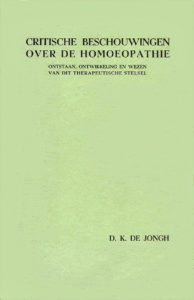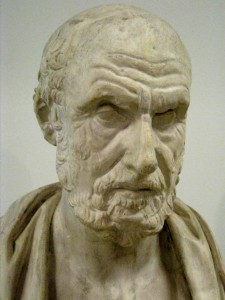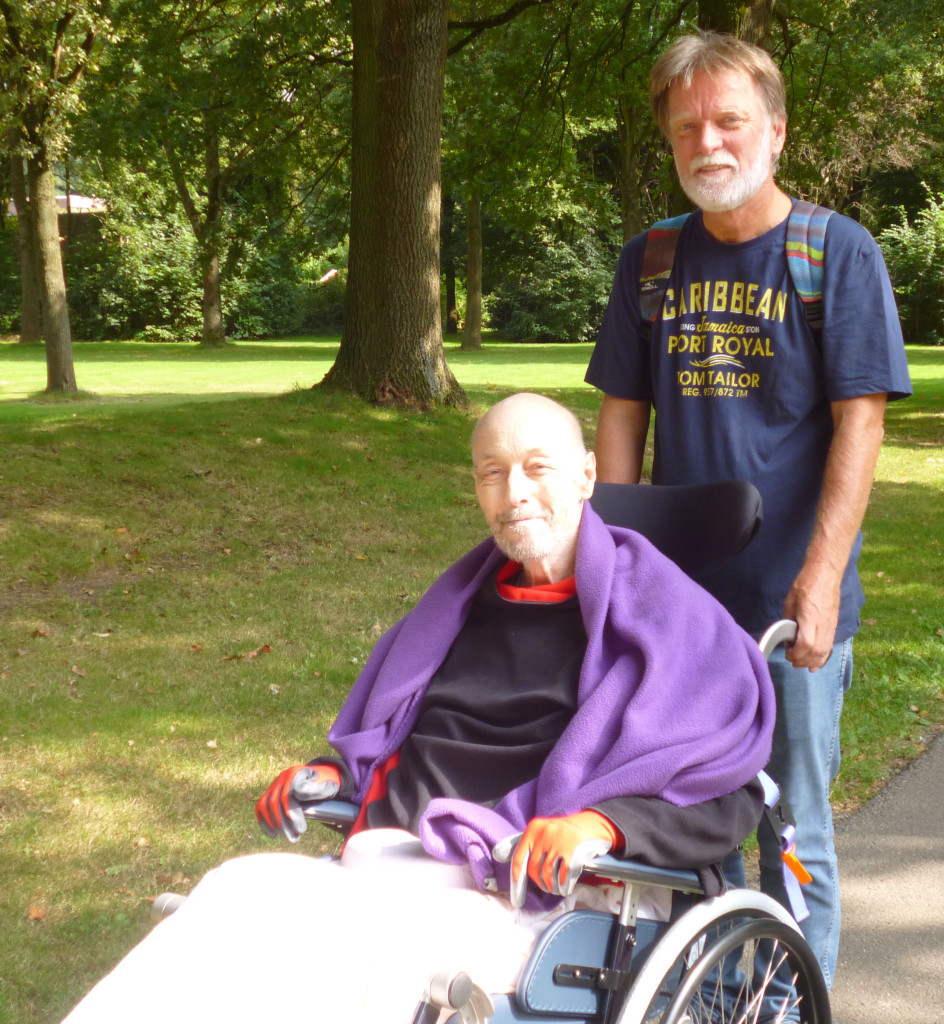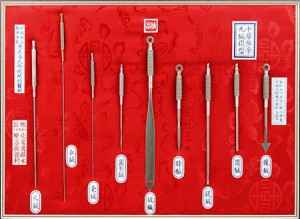 In 1943 voltooide de arts David Karel de Jongh een proefschrift over de homeopathie. Hij besloot met de conclusie dat de homeopathie maar beter weg kon. De basis voor dit oordeel was tweeërlei. Hij had vele honderden artikelen en boeken nauwkeurig doorgelezen, en hij had een tijd meegedraaid in een homeopathisch ziekenhuis. Het proefschrift is nu geheel gedigitaliseerd. De conclusies van De Jongh zijn nog even correct. Dit werd al opgemerkt door C.P. van der Smagt in zijn boekje Homeopathie, het wonder van het gelijkende (elders op deze website). Niet velen weten wat een rommeltje de homeopathie is. Het grote publiek meent dat het iets is met onschuldige kruiden. Degenen die er meer van weten, menen dat het over extreme verdunningen gaat.
In 1943 voltooide de arts David Karel de Jongh een proefschrift over de homeopathie. Hij besloot met de conclusie dat de homeopathie maar beter weg kon. De basis voor dit oordeel was tweeërlei. Hij had vele honderden artikelen en boeken nauwkeurig doorgelezen, en hij had een tijd meegedraaid in een homeopathisch ziekenhuis. Het proefschrift is nu geheel gedigitaliseerd. De conclusies van De Jongh zijn nog even correct. Dit werd al opgemerkt door C.P. van der Smagt in zijn boekje Homeopathie, het wonder van het gelijkende (elders op deze website). Niet velen weten wat een rommeltje de homeopathie is. Het grote publiek meent dat het iets is met onschuldige kruiden. Degenen die er meer van weten, menen dat het over extreme verdunningen gaat.
Similiabeginsel
De homeopathie draait echter om het zogeheten similiabeginsel. Toen de bedenker Hahnemann er in 1796 mee begon, luidde dit ongeveer: als je een zieke wilt genezen, moet je eerst de symptomen van de zieke vaststellen, en dan iets zoeken dat net zulke symptomen bij gezonden geeft. Hoe Hahnemann op dit idee kwam, is onduidelijk. Hij citeerde een boek uit 1738 waar dit al met zoveel woorden in staat. De auteur, een zekere Johann Christian Hummel, schreef daarin over een Deense regimentsarts genaamd Stahl. Deze Stahl zou in eigen land tamelijk beroemd zijn en om zijn succes te verklaren, beweerde hij dat je ziekten beter volgens ‘similia similibus’ kon behandelen.




